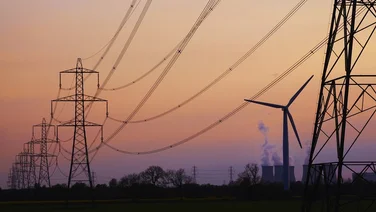A new study has revealed that the average carbon footprint of the top 1% of emitters is a staggering 75 times higher than than the bottom 50% of the world’s population.
Published on nature.com, the study also showed that the top 10% of emitters are responsible for almost half of all CO2 emitted into the atmosphere.
The study looked at the average emissions of countries too, showing that carbon footprints varied wildly.
The United States topped the list of national average carbon footprints, eclipsing the likes of China and the entirety of Europe.
The US also has the highest global average expenditure, with the study suggesting a link between purchasing power of a nation and the amount of carbon emissions.
In fact, the study makes it clear that inequality is one of the driving factors behind carbon inequality. With wealth distributed unevenly, countries with greater wealth end up consuming more, which leads to unequal emissions.
It also says that in order to meet the United Nations Sustainable Development Goal 1, which is to lift more than one billion people out of poverty, emissions would have to rise by 1.6-2.1%.
The caveat is that high-emitting nations would have to substantially reduce their emissions, so as not to overshoot climate targets in the efforts to alleviate poverty.
You can read the full study here.

How wide is the gap in emissions?
The carbon emissions differ enormously between the bottom percentile of emitters and the top. Looking at the carbon emissions of roughly one million people in sub-Saharan countries such as Madagascar and Burundi, you reach around 0.1 tCO2 (tonnes of carbon dioxide).
For the 500,000 individuals at the top of the global carbon emissions spectrum, we’re looking at hundreds of tonnes of carbon dioxide. The lack of an accurate figure is because the actual carbon emissions are likely substantially higher, and many high-income countries aren’t a part of the WBCSD (World Business Council for Sustainable Development).
These countries include Australia, Canada, Japan, and the Gulf Countries (Bahrain, Kuwait, Oman, Qatar, Saudi Arabia and the United Arab Emirates). Also, monitoring the consumption patterns of the very rich is difficult.
Highest carbon emissions per capita
Despite the United States topping total carbon emissions, they aren’t the worst offenders when it comes to carbon emissions per capita.
That unfortunate accolade lies with the tiny country of Luxembourg. Per capita, citizens of Luxembourg emit an astonishing 30 tCO2. Compare this to the United States, who sit second on the list with 14 tCO2 per capita.
The average carbon emissions per capita for some sub-Saharan countries, again including Madagascar and Burundi, is just 0.2 tCO2, highlighting the immense carbon emissions disparity between the top and bottom countries.
Luxembourg topped another unfortunate list too: the carbon emissions of the top 10% of earners. In Luxembourg, the top 10% emit 76.9 tCO2, which eclipses even the top 10% of earners in the United States, who emit a comparatively low 54.9 tCO2.
Still, the 10% of both these nations vastly outstrip the top 10% of earners in Europe, who emit on average 16.8 tCO2.
To further contrast, the top 10% of earners in low-emitting countries such as Ethiopia and Uganda emit a paltry 1 tCO2. This is lower than the bottom 10% of earners in many European and Central Asian countries, the United States, and China.






